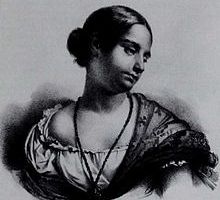Maria Petraccini facts for kids
Maria Magdalena Petraccini was an amazing Italian doctor and anatomy professor. She was born in Florence, Tuscany, in 1759. She passed away in Bagnacavallo, Ravenna, in 1791.
Contents
Early Life and Medical Training
Maria Petraccini grew up in a merchant family in Tuscany. She married Francesco Ferretti, who was also a doctor and anatomy professor. He was the head doctor at the Bagnacavallo hospital.
Maria became very interested in surgery because of her husband. He taught her by working on bodies that had been donated for study. She became so skilled that other doctors were impressed by her abilities.
In September 1788, the Florence Medical Board recognized her talent. They decided she was good enough for their university. This was a big deal because, at that time, it was very unusual for women to become doctors.
On September 13, 1788, she became a medical student at the University of Florence. There, she learned from professors Lorenzo Nannoni and Angelo Nannoni. They also taught her about obstetrics, which is the care of women during childbirth.
Maria and her husband then moved to Ferrara. She continued her training at a hospital called 'Arcispedale Sant'Anna di Ferrara'. She showed her deep knowledge of anatomy by working on bodies in front of professors.
She later graduated from the University of Ferrara. She even became a member of the university's board. She also gave a special presentation about anatomy to the medical professors.
Career as a Teacher
Maria Petraccini became a teacher of anatomy at the University of Ferrara. Her daughter, Zaffira Ferretti, also taught the same subject there.
Universities in Salerno and Bologna were well-known for medical education. Many women anatomists and doctors worked in those cities. Maria and her daughter's careers showed that Ferrara also welcomed women as students and teachers.
Maria's daughter, Zaffira, seemed to have her mother's talents. She studied surgery at the University of Bologna. She earned her medical degree in May 1800.
Zaffira later got a job with the Government of Italy. For some time, she lived in Ancona. She was the Director-General for all the midwives in the country.
Important Ideas and Writings
After her daughter was born in 1789, Maria Petraccini published books. These books were about how to care for babies and women during childbirth. Her most famous book was called 'Memoire on the physical education of children'.
Maria lived during a time of big changes in culture and science. She wanted to share new ideas about how to raise children. She believed children deserved better care. She wrote that she would "abandon old ideas" and "fight for innocent humanity."
She knew it was hard for her as a woman to share these ideas. She wrote that she was "still a woman," and sometimes people might not take her seriously.
Her writing was influenced by books like 'Émile' by Jean-Jacques Rousseau. She also learned from Nicolas Andry De Boisregard. He was a famous doctor who helped start modern orthopedics.
In her book, Maria spoke out against the common practice of tightly bandaging babies. She said this could cause injuries and problems with their bodies. She believed babies should be allowed to move their arms and legs freely.
She also strongly supported breastfeeding. At that time, only poorer women usually breastfed their babies. Richer families often hired a wet nurse or sent their babies away to be fed.
Maria proposed a very modern way of raising children. This was important because many babies were dying at the time. She wanted to help reduce infant deaths.
For newborns, she suggested warm baths and quiet rest. She also recommended comfortable clothes. She said babies should wear "a shirt rather large" so nothing would stop their small movements.
She happily wrote about her son, who could move freely and crawl at just 7 months old. She also made another unusual choice when it was time to stop breastfeeding. She slowly replaced her milk with "a well-cooked minestrone" three or four times a day.
With this diet, her child grew strong. By one year old, he started to walk. Maria was proud to share her results. She hoped other mothers would follow her advice to improve their children's lives.
She continued her studies and visited patients, especially children. She practiced medicine at home and gave advice to mothers. Her ideas had a strong impact on people in her town. Many came to see her, even if they didn't always agree with her.
Major Accomplishments
In February 1789, the Council of Elders of Bagnacavallo officially recognized Maria's work. They gave her money to help poor women in the countryside for free. She helped them with childbirth and surgery. This meant Maria officially became part of the town's medical staff.
Maria Magdalena Petraccini Ferretti died at the age of 32.
See also
 In Spanish: Maria Petraccini para niños
In Spanish: Maria Petraccini para niños


